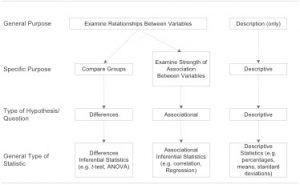Edgar Arias, PhD Candidate at VT. Email earias@vt.edu
As previous research shows, pricing is a key factor in the performance of a firm in international markets. Nowadays, it is a common practice for companies to determine their prices based on cost plus a profit markup and/or market prices (Dolan, 2008). The hardwood lumber industry usually works in a similar way. The problem with these approaches is that they are usually based on arbitrary decisions and do not account for the risk of either setting prices to high –and therefore losing demand, or too low and leaving money on the table. The goal of the next phase of my doctoral study is to test a pricing methodology based on the principles of Revenue Management, that have proved to be successful in increasing profits in other industries, and that may also be valuable in the hardwood lumber industry. The focus of this phase will be centered in exporting firms because they have to deal with more challenges and complexities at the time of determining prices than those which focus on the domestic market.
Revenue Management (RM) is the discipline within Scientific Management that deals with pricing questions such as: “how much to ask?”, “when to drop the price (if at all)”, “what the asking price should be?”, “which offer to accept?” among others, towards maximizing profitability. In other words, RM is concerned with demand-management decisions (Talluri & Van Ryzin, 2005). In fact, RM is also known as demand management, yield management, pricing and revenue optimization, etc.
Above questions are rather old concerns in business, as old as the notion of free market itself. But what is innovative about the RM approach is the application of principles and techniques original in Operations Research to find the right price for “every product, to every customer segment and through every channel” (Phillips, 2005). It is based on the fact that markets are not perfect, and in those imperfections lies the opportunity to improve prices beyond what the market dictates, in such a way that profits are also improved (Ross, 2008).
Considering that RM literature in the forest products literature is practically inexistent, we will start by studying a fundamental element of the pricing optimization process: the Price-response (P-R) function. The P-R function (also known as curve) establishes how the demand of a product varies as a result of a change in price. This function (Figure 1) is seller specific –companies supplying the same product to the same market will show distinct curves, and has the properties of being: non-negative, continuous, differentiable and downward sloping. Common Price response functions are: linear, logit, S-shaped, among others (Phillips, 2005).
Determining the P-R function is necessary to address the basic price optimization problem which consist on maximizing the total contribution m. Each customer order sold at a price p and with a cost c, has a unit margin equal to p-c (Phillips, 2005). Therefore we define total contribution as following:
m(p)=(p-c)d(p)
In general the total contribution function (Figure 2) is concave, with an apex located at the point where the first derivate equals zero. In other words, the point is where total contribution is maximized and the price is optimal (p*).

This simple model grows in complexity as we incorporate elements such as supply constraints and price differentiation by regions. In this study, we will analyze historic sales data in order to determine optimum pricing values for each product in each geographic region, which will serve the sales and marketing groups in negotiating with customers abroad in a lumber supply-constrained scenario. In the process, we will map the path that follows from base prices, through invoice prices to pocket prices (Marn & Rosiello, 2008) –what companies actually charge –and determine why companies sometimes make less money per order than the market. In other words, we will look for potential leakages in revenue and opportunities to fix them.
References
- Dolan, R. J. (2008). How Do You Know When the Price is Right? Harvard business review on pricing (pp. 1-26). Boston: Harvard Business School Pub.
- Marn, M. V., & Rosiello, R. L. (2008). Managing Price, Gaining Profit Harvard business review on pricing (pp. 45-74). Boston: Harvard Business School Pub.
- Phillips, R. L. (2005). Pricing and revenue optimization. Stanford, Calif: Stanford Business Books.
- Ross, E. B. (2008). Making Money with Proactive Pricing Harvard business review on pricing (pp. 171-200). Boston: Harvard Business School Pub.
- Talluri, K. T., & Van Ryzin, G. (2005). The theory and practice of revenue management (Vol. 68). New York, NY: Springer.




